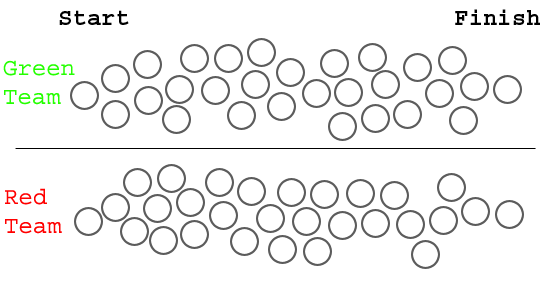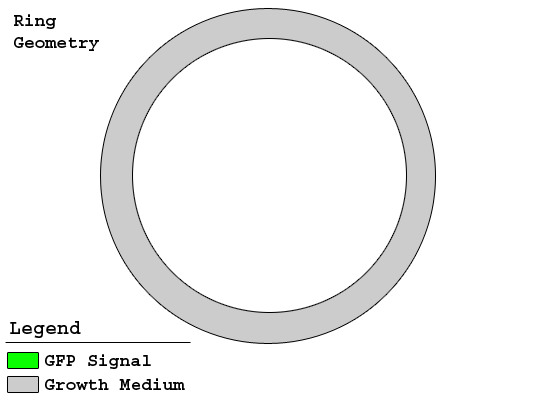Team:TUDelft/MIntegration
From 2009.igem.org
Module Integration
In order for us to achieve our goal of having a relay race between GFP and RFP teams,
various parts from the the three modules must be integrated together into a single working system. What follows is a description of the requirements for the integrated system.
Signal Plasmid
The signal plasmid will contain the following features:
- oriTR - to allow transfer during conjugation
- constitutively expressed trbK - to block backward propagation of the signal, to reduce redundant transfer, and to prevent lethal zygosis
- constitutively expressed trbC - if lethal zygosis turn out to be a problem (undetermined)
- constitutively expressed GFP for the green team and RFP for the red team
- delay device
- input: the delay is triggered by the presence of the helper plasmid
- output: expression of the I-SceI homing endonuclease
- cut sites for the I-SceI homing endonuclease
- a low copy backbone to allow the endonuclease to destroy the signal plasmid
Helper Plasmid
The helper plasmid will consist of a modified R751 plasmid with the following features:
- trbK knockout to allow cells containing the helper plasmid to conjugate
- oriTR knockout to prevent transfer of the helper plasmid during conjugation
- trbC knockout to prevent lethal zygosis (undetermined)
- constitutively expressed trigger for the delay device
Initiator Cells
In our proposal the signal is started by placing Initiator Cells into a culture of calls capable of transmitting the signal. Special care must be taken with these cells so that the self-destruction timer is not activated before placing the cells into the communication medium, otherwise your signal plasmid will dissapear at some point while you are culturing the Initiator Cells. Several strategies can be used to avoid this:
- The start of the delay can be linked to the presence of some external initiator such as IPTG.
- A different type of cell can be made to initiate the signal. The helper plasmid in these cells would not contain the trigger which starts the delay. An externally triggered kill switch would allow these cells to be removed once the signal is propagating.
- A further solution would be to simply take some cells from a culture where the signal is already propagating (although this raises a chicken-or-egg type problem).
- If the delay is long enough this will not be an issue. The requirement would be Delay Time > Culturing Time + Time for 1 Conjugation Event. This solution strictly limits the reset time available and is dependent on a very long delay.
Plasmid Stability
Future Applications
We foresee many interesting applications becoming available once the full system is operational. These include everything from logic circuits to the generation of spatiotemporal patters:
 "
"









